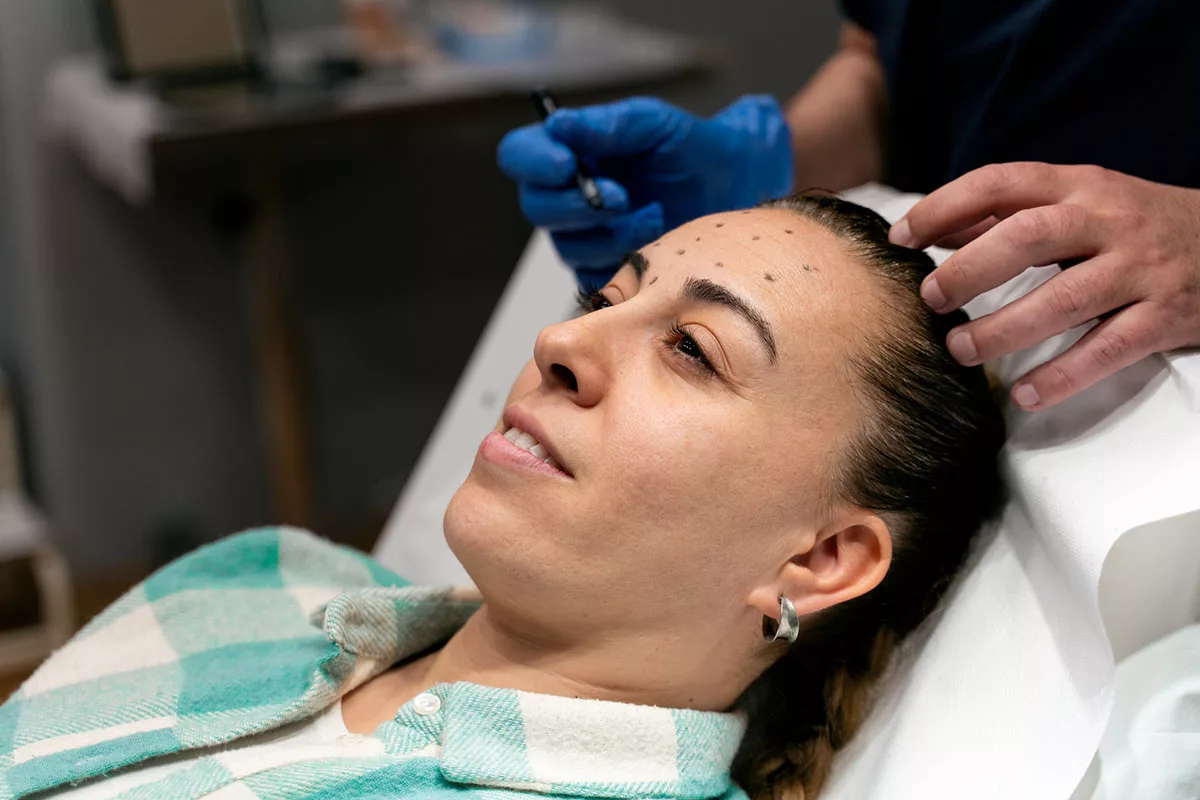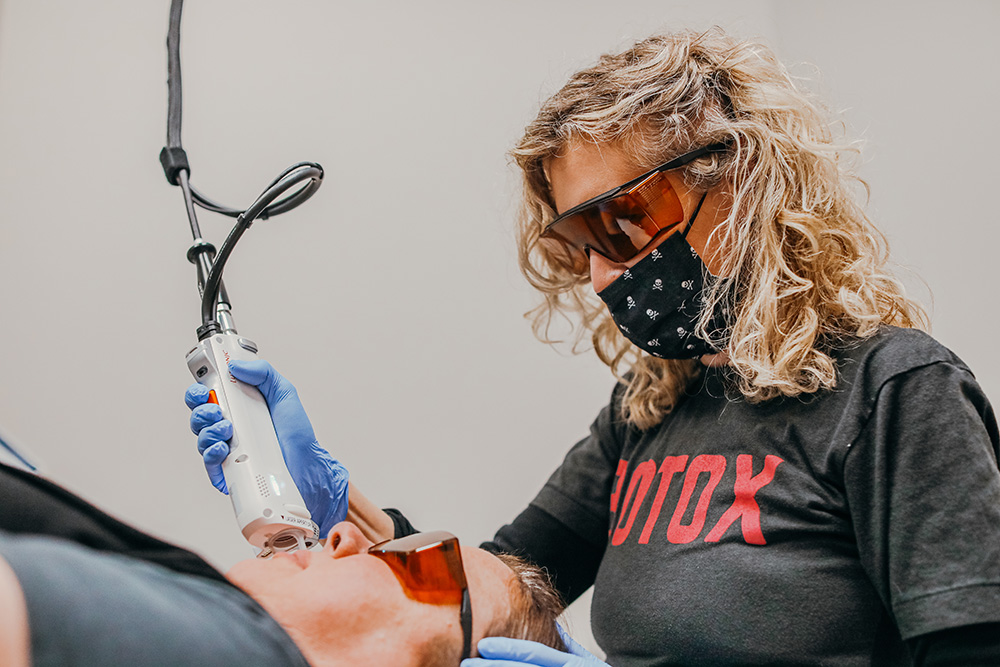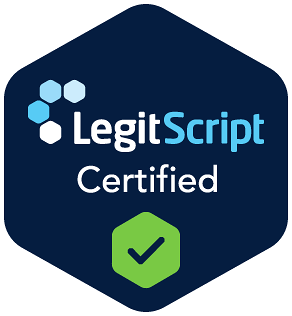The popularity of BOTOX® and other skin smoothing treatments like Dysport are at an all-time high. It’s estimated that more than 11 million people have used BOTOX® globally, making it one of the most popular and common cosmetic treatments in the world. These treatments have been shown to be safe, effective, and easy to administer.
Patients are starting skin smoothing treatments earlier than ever before in hopes of getting a head start on the aging process and preventing wrinkles before they set in. However, when beginning to do some research on the available skin smoothing treatments on the market, some patients may experience confusion when it comes to these two very similar treatments.
Let’s dive into the differences and similarities between BOTOX® and Dysport.
How are BOTOX® and Dysport Similar?
BOTOX® and Dysport are both extremely popular injectable wrinkle-relaxing treatments that are derived from botulinum toxin type A, a neurotoxin which temporarily paralyzes muscles to reduce the appearance and formation of wrinkles. They have also been used to alleviate certain medical conditions in some cases like headaches caused by muscle tension in the face.
Both Botox and Dysport have been approved by the FDA to treat facial wrinkles, such as frown lines, crow’s feet, and forehead lines and have been used for over 20 years in a cosmetic context.
Because BOTOX® and Dysport are both injectables and use the same neurotoxin, they can also have similar side effects for some patients, which include minor bruising, swelling, and headaches.
What's the Difference Between Dysport and BOTOX®?
The difference between Dysport and BOTOX® may seem small to some people, considering they both use the same basic neurotoxin as the main mechanism of action, and both BOTOX and Dysport are injected into specific muscles using very small needles, with the goal of relaxing the muscles and smoothing out wrinkles.
However, the two products have different formulations and dosing units, and may require different injection techniques, depending on the individual patient and the area being treated. Read on to learn mroe about the differences between Dysport and BOTOX®.
Dysport vs BOTOX®: A Difference in Formula
While the basic formula of BOTOX® and Dysport is similar, there are some differences in the protein structure and potency. Dysport has smaller molecules than BOTOX®, allowing it to diffuse to nearby muscles more easily and potentially work faster. However, this also means that larger doses of Dysport may be required to achieve the same results as BOTOX®.
The choice between BOTOX® and Dysport comes down to the preferences and needs of each individual patient, as well as the expertise of their injector.
Dysport vs BOTOX® Injection Techniques

While the injection technique can differ depending on the area being treated and the preference of the injector, Dysport injections are administered in a broader pattern around the face than Botox, while Botox is injected in smaller, more targeted patterns in each treatment area.
BOTOX® is typically injected in a precise pattern to achieve the desired results for the patient. The forehead, between the eyebrows, and around the eyes are common areas that are targeted. The injections are usually spaced about half an inch to one inch apart, in a grid-like pattern. This technique is called the “multiple injection technique” and it allows the provider to cover a specific area evenly and accurately with the right amount of Botox. The pattern of injection is crucial to avoid over-injecting and to ensure that the patient’s muscles remain functional while achieving the desired cosmetic benefits.
Additionally, the dilution of BOTOX and Dysport differs, with Dysport being more diluted than BOTOX. This may affect the injection technique used by the provider as they may need to adjust the injection depth and volume accordingly.
Ultimately, the injection technique used for both BOTOX and Dysport depends on the provider’s preference and experience, as well as the patient’s individual needs and desired outcomes.
Dysport vs BOTOX® Cost
The cost of BOTOX and Dysport varies depending on several factors such as the amount of product needed for the treatment, location, the reputation of the provider, and possible promotions offered.
Generally, Dysport costs slightly less than BOTOX per unit, but a higher amount of Dysport is usually needed to achieve the same results as BOTOX.
As a result, the overall costs might be similar. It’s essential to consider reasons for having the procedure and potential long-term effects when comparing the cost of BOTOX and Dysport. It’s also advisable to consult a qualified and experienced provider for a personalized consultation and a price quote.
Dysport vs BOTOX® Dosages
BOTOX and Dysport are both administered via injections but there are some differences in dosage.
The primary difference is the concentration of the two products and dosage units: one unit of BOTOX® is equivalent to three units of Dysport due to the difference in concentration of the neurotoxin used.
BOTOX® typically requires more units per treatment area compared to Dysport. This means that the provider may need to use more injections to achieve the desired result. It also means that the provider needs to be precise in their dosage calculations to avoid over-treating or under-treating the patient.
Dysport has a lower concentration of active ingredient than Botox which means it needs to be injected differently to cover the same area.
Your DermaBlue injector will help you determine the best treatment for your particular goals during a free aesthetic consultation.
Does Dysport Work Faster than BOTOX®?
Dysport has a faster onset of action and may spread more easily to surrounding areas, while Botox has a more gradual onset but may last a bit longer.
Dysport is quicker than Botox because it contains smaller molecules of botulinum toxin type A, which allows it to spread more easily and quickly through the muscles. This results in faster onset of action, usually within two to three days after injection, compared to Botox which can take up to a week to take effect.
Additionally, Dysport requires fewer injections than Botox to achieve the same results, which can further contribute to quicker treatment times.
How Long Does it Take for BOTOX® to Work?
BOTOX® and Dysport do not work immediately—BOTOX usually takes 3-5 days to start working, although some people may notice results within 24-48 hours. It can take up to two weeks for the full effects of BOTOX to be seen and for muscles to be affected by the treatment.
It takes time for BOTOX® to work because it needs to find and bind to the nerve endings that control muscle movement. Once Botox is injected into the muscle, it needs time to be absorbed into the nerve endings and block the release of the chemical that signals the muscle to contract. This process can take several days to a week or more. The full effects of Botox may not be seen for up to two weeks after injection. Additionally, the size and strength of the muscle being treated, as well as the individual’s metabolism, can also affect how quickly Botox takes effect.
Dysport vs BOTOX®: How Long Does it Last?
The duration of effects of both BOTOX® and Dysport may differ between individuals and depends on a number of factors such as the area treated and the amount of product used.
Botox typically lasts between three to six months, with some variation depending on the individual and the specific area being treated. The effects of Botox gradually wear off as the muscles begin to regain their full strength and mobility. After several months, most patients will begin to notice that their muscles are once again able to contract and move freely, indicating that it is time for another Botox injection.
Generally, most patients see the best results with treatments every 3-4 months, although some may require maintenance injections more frequently or less frequently depending on the individual’s metabolism and the rate at which their body breaks down the treatment formula.
Dysport typically lasts for 3-6 months for most patients, at which point another round of injections may be needed to maintain the desired results.
Many patients schedule follow-up appointments at the time of their initial BOTOX® or Dysport injections to ensure that the results last and there is no lapse in effectiveness. Your DermaBlue provider will help you set the appropriate frequency and a follow-up appointment during your first BOTOX® treatment.
BOTOX® or Dysport? Which One Should I Choose?
Before making a decision to use BOTOX® or Dysport, you’ll need to consult with a medical professional, who will direct you to the treatment that best suits your end goals. Ultimately, the choice of which one to use depends on the individual’s medical history and desired outcome.
Learn more about the skin smoothing treatments offered at DermaBlue here if you wish to do more research on skin smoothing treatments like Dysport or BOTOX®.
Your DermaBlue provider will help you decide which treatments is right for you during a free 30-minute cosmetic consultation. We’ll sit down with you to discuss your goals, assess your facial anatomy, determine dosages and schedule, create a digital chart to track progress, and provide a clear pricing estimate. Schedule your free cosmetic consult at DermaBlue today!
Frequently Asked Questions about Dysport and BOTOX®
Generally, the effects of both injections last between three and six months, and the duration depends on a patient’s metabolism, body mass, and the treatment area. Ultimately, the longevity of Botox or Dysport will depend on various individual factors, including the patient’s age, the severity of their wrinkles, and their overall health status.
When it comes to comparing the costs of Botox and Dysport, it can vary depending on the location of treatment and amount needed. On average, Dysport may cost slightly less than Botox per treatment area due to the different dilution ratios.
Dysport is composed of smaller molecules, which may allow it to spread to a wider area and provide a more natural-looking result. On the other hand, Botox has a higher concentration of botulinum toxin A, which may make it better suited for deeper wrinkles and lines. Ultimately, the choice between Botox and Dysport depends on a variety of factors and the patient’s specific goals.
There is no definitive answer to whether Dysport is more painful than BOTOX®, as pain thresholds and experiences can vary greatly among individuals. However, some patients have reported experiencing slightly more discomfort with Dysport injections compared to Botox injections, although the difference is usually minimal. Dysport uses a slightly different formulation than Botox, which contains a smaller protein molecule, and may create a slightly different sensation during injection. But in general, both treatments should be relatively painless, and many patients report only mild discomfort during the procedure. To minimize discomfort during either treatment, patients can consult with their provider beforehand about possible pain management options, such as topical numbing cream or ice packs.
Some celebrities choose to use alternatives to Botox, such as dermal fillers, thread lifts, and micro-needling. Dermal fillers can be used to add volume to various areas of the face, such as the cheeks and lips, while thread lifts can provide a subtle lift to the face without surgery. Micro-needling, also known as collagen induction therapy, involves using tiny needles to stimulate collagen production in the skin, helping to improve its overall texture and firmness.
Some celebrities opt for more natural approaches, such as regular exercise, healthy diet, and skincare routines that incorporate anti-aging ingredients like retinol and vitamin C.








